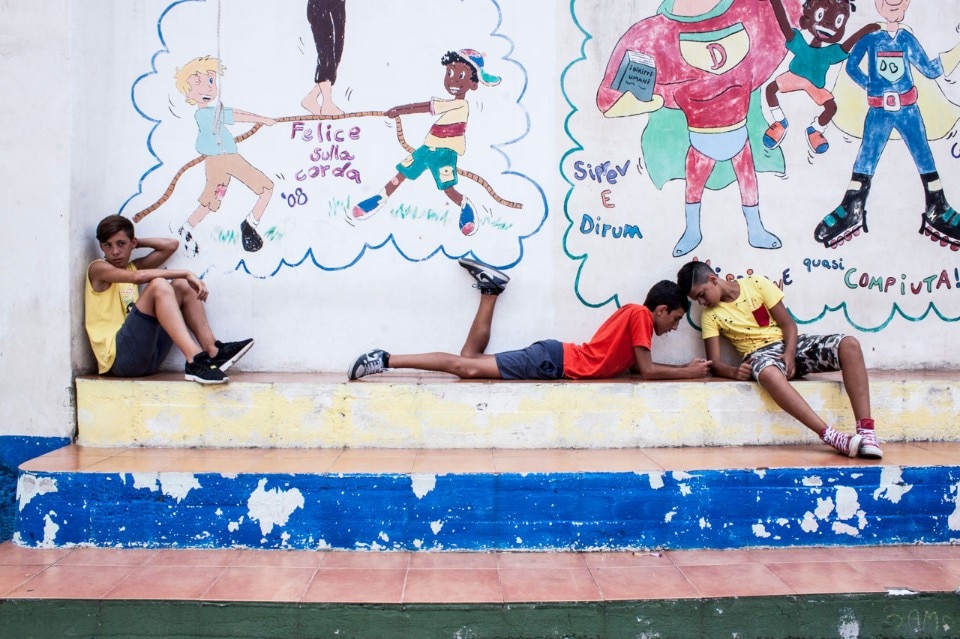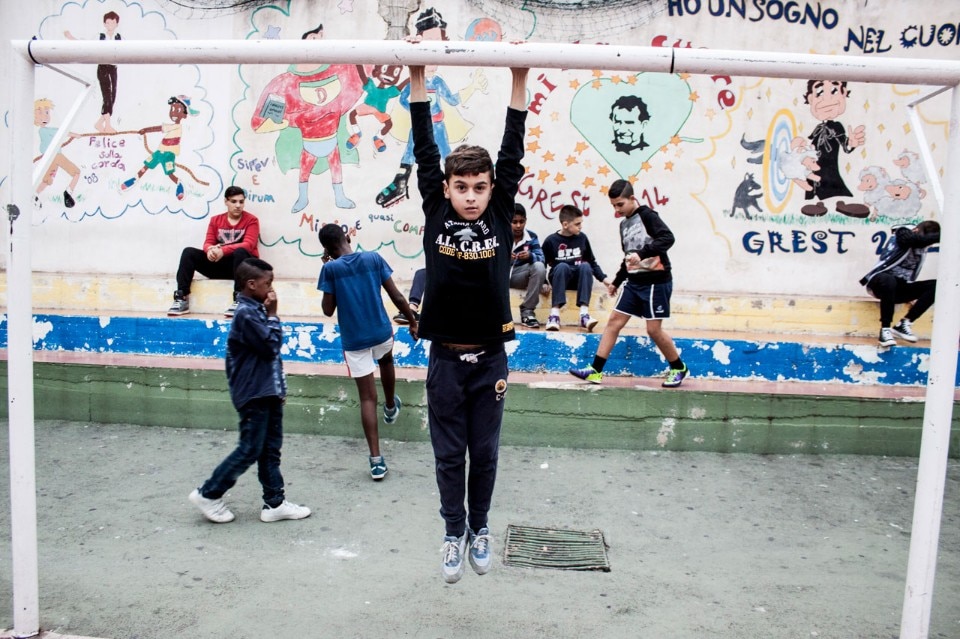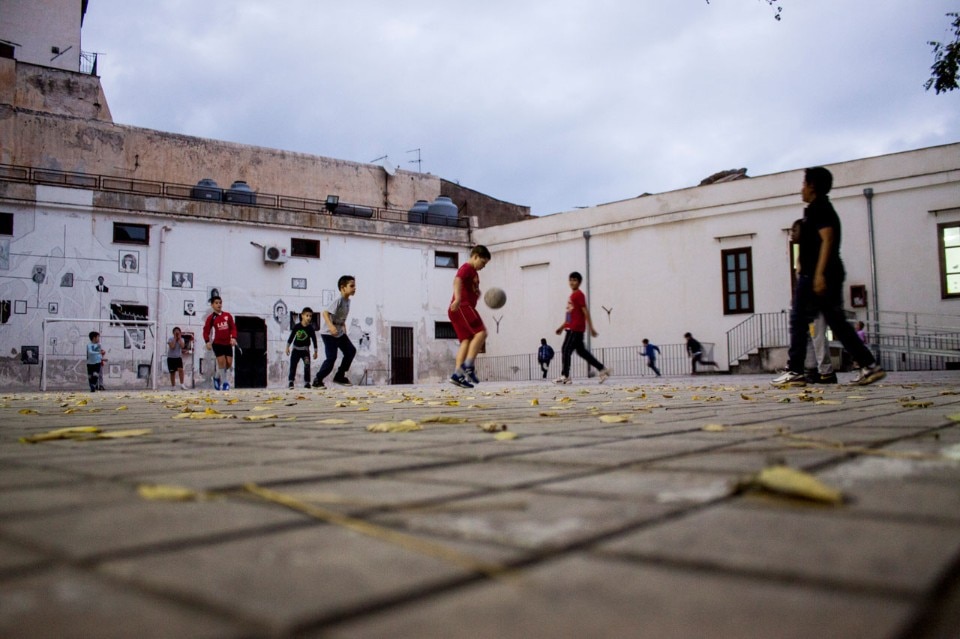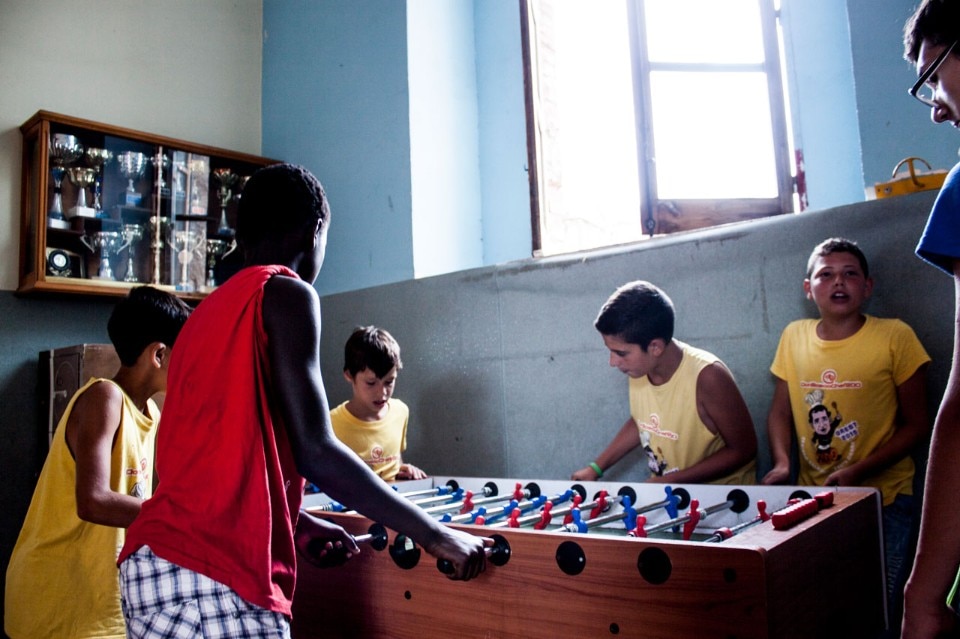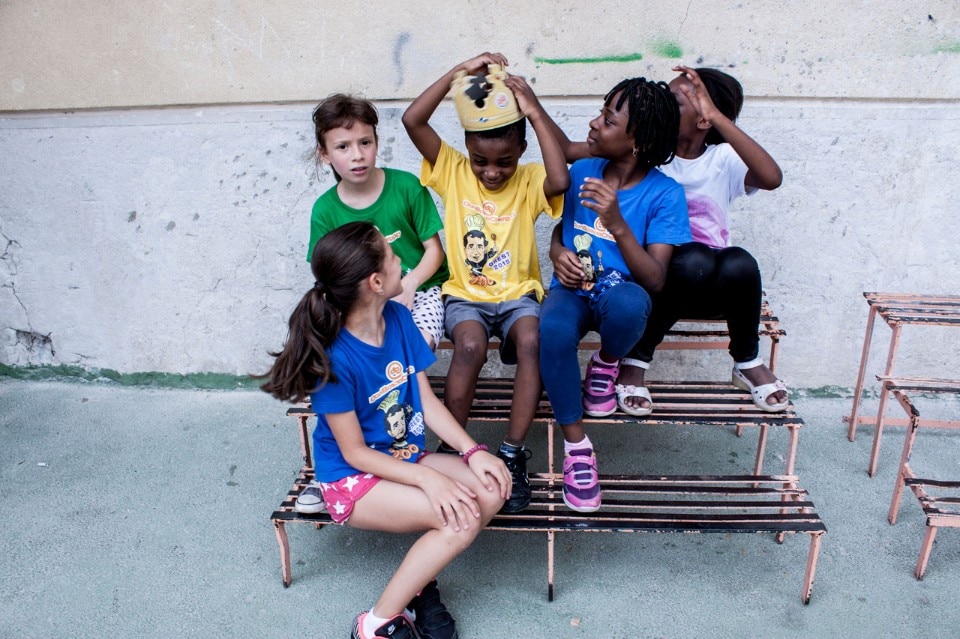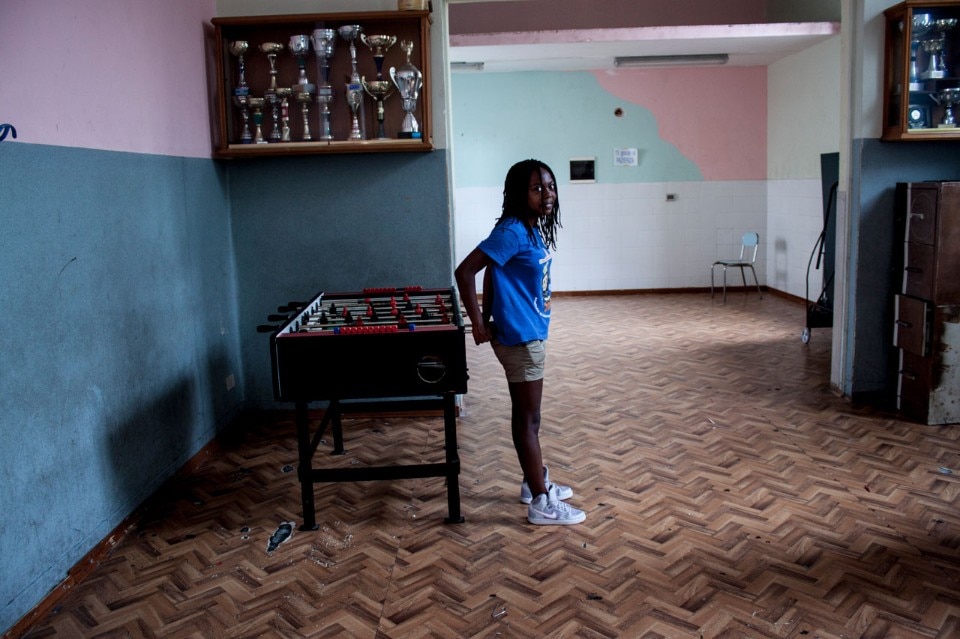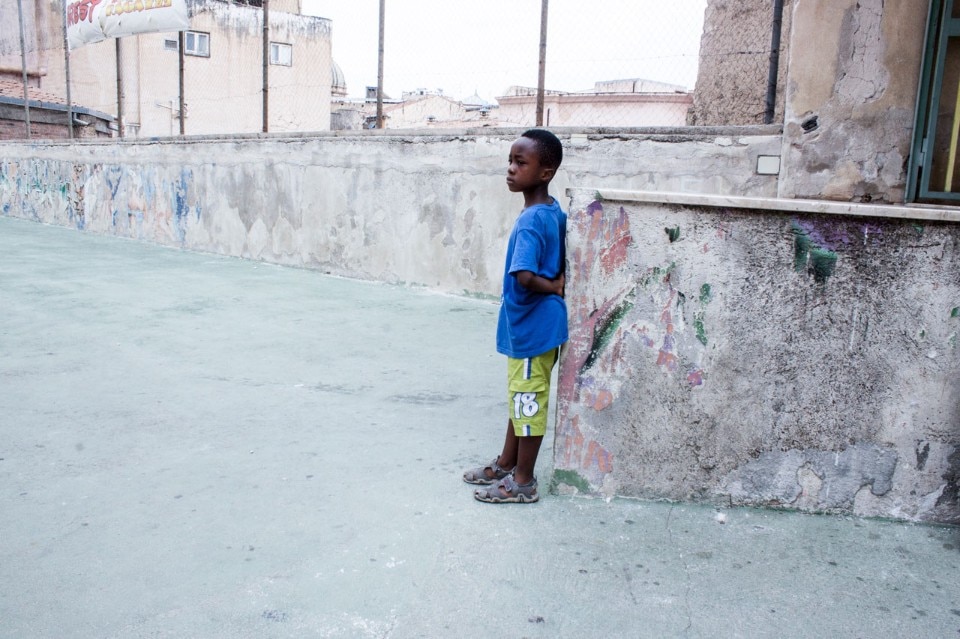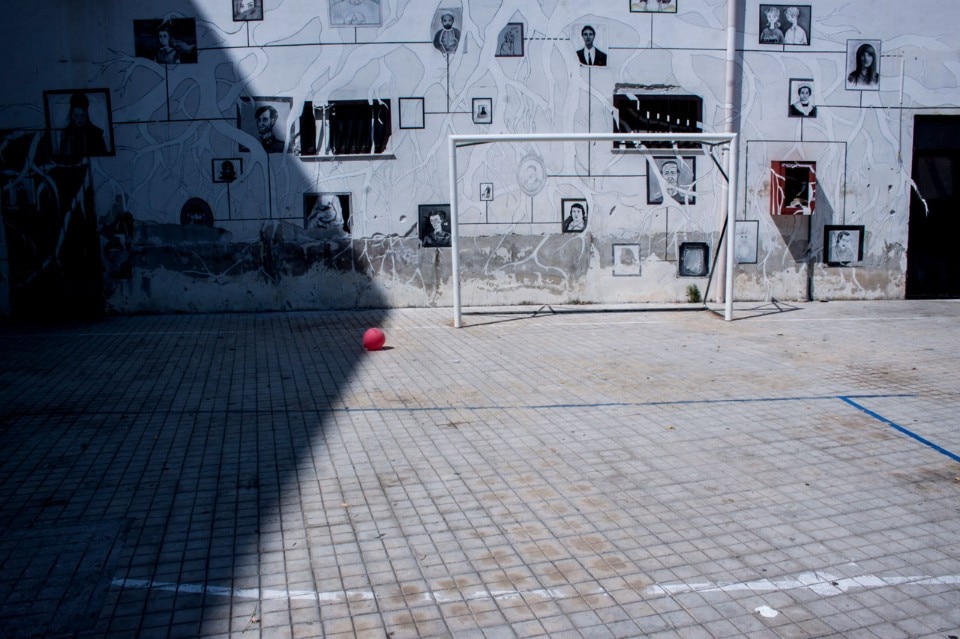“If someone asks me how many migrants there are in Palermo, I answer that there are none, because whoever comes to Palermo is Palermitan,” said Leoluca Orlando, the mayor of Palermo, during the opening ceremony of “A Planetary Garden: Cultivating Coexistence”, the 12th Manifesta art festival on 16 June 2018. In the current political climate in Italy and the world, his words and the very theme of the exposition put Palermo at the centre of the Mediterranean in the position of bridgehead, as a place of resistance where a political proposal is launched containing the radical idea of being territorially alternative.
The proposal is rooted in the city’s culture of hospitality, in the possibility of opening the doors, for instance the doors of the palazzi in the old town centre, which are extraordinary even in their state of ruin and even when they’re under construction for renewal. They are the perfect incubators for artwork that tells of fragile existences, stories of escape, borders, shipwreck, landing, loss and rebirth. Then there are the doors of Casa Santa Chiara, a residence for young migrants that opened in late May in the Ballarò Albergheria neighbourhood coordinated by the CIAI (Centro Italiano Aiuti all'Infanzia). The house is the fruit of collaboration between institutions, associations and private-sector social agencies. It hosts eight young people who arrived in Palermo alone as minors. When they turned 18, they were no longer eligible to remain in the circuit of institutional hospitality. Casa Santa Chiara offers an innovative cohabitation formula. Besides completing their vocational training and apprenticeship, starting in September they will manage lodgings for tourists that were created in an abandoned wing of the same complex, the former monastery of Santa Chiara.
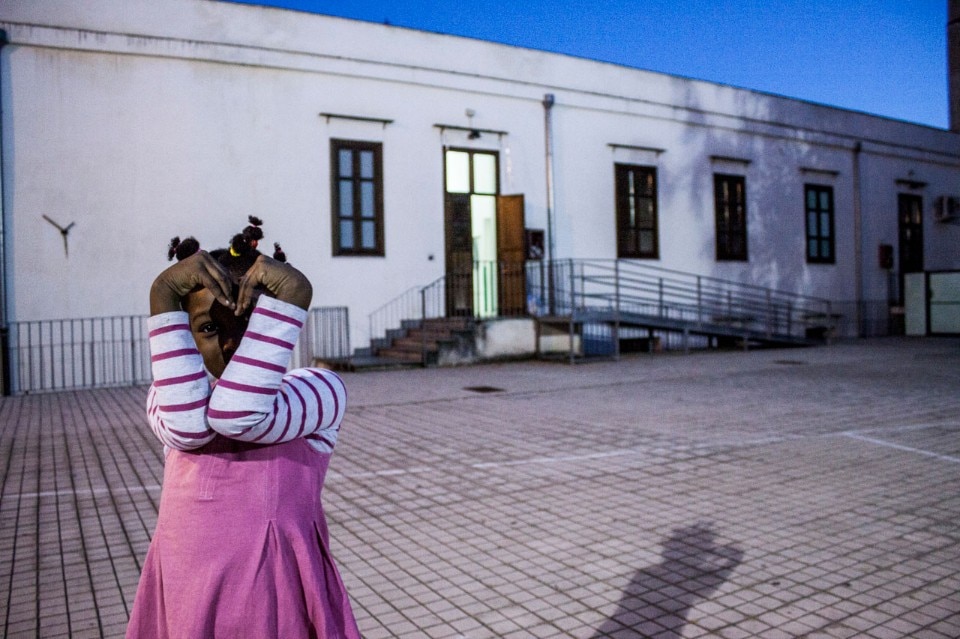
The quarter where it is located has been one of Palermo’s multi-ethnic centres for many years now. Here, 60 per cent of the population comes from far away: Bangladesh, Sri Lanka, Ivory Coast, Nigeria and the Maghreb. Since the end of the 1980s, many immigrants found work and hospitality in the old city centre abandoned by the Palermitans, where there is an odd mix of decrepit buildings and palazzi still inhabited by the heirs of noble families. All are part of a lively urban fabric thanks to open-air markets (always in need of inexpensive labour), artisans’ workshops (offering streetside metalworking of iron, copper and aluminium, for example on Via dei Calderai), and big churches (places of welcoming and social gathering). This liveliness is found at Casa Santa Chiara, too. Its rooms host Hindu, Islamic and Pentecostal prayer, weddings and funerals. Children play ball in its large court. Numerous lay volunteers direct after-school activities for the entire neighbourhood. Also hosted at the Casa is “Filo da torcere”, a sewing and recycling workshop where women meet and make things. Across the way, a Sicilian-cum-ethnic restaurant has opened called Moltivolti, where different cultures can be tasted. (Moltivolti is featured in the video installation Wishing Trees by Uriel Orlow at Palazzo Butera.)
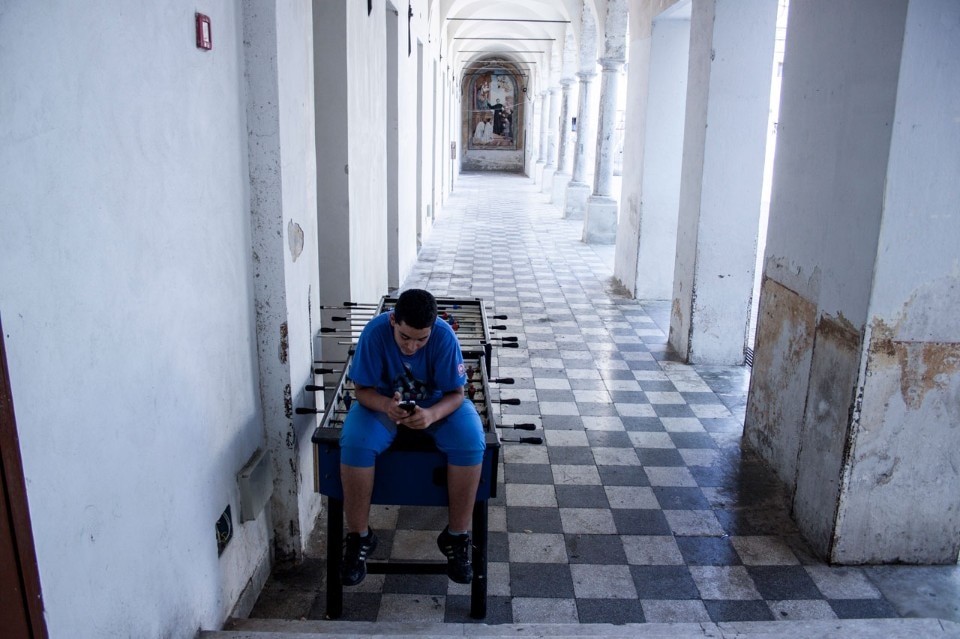
Casa Santa Chiara is the opposite model of the big shelters for refugees on the edges of the city. It is a model of social housing that combines dwelling and work. It also combines hospitality with the revitalisation of empty buildings. According to a recent study by the Associazione Nazionale Centri Storici Artistici, one out of ten lies derelict in downtown Palermo. The Casa is a model of the city’s openness toward people arriving, and a model of the hospitality locations’ openness toward the city.
Since the end of the 1980s, many immigrants found work and hospitality in the old city centre abandoned by the Palermitans, where there is an odd mix of decrepit buildings and palazzi still inhabited by the heirs of noble families, all part of a lively urban fabric.
It is indeed a model that the municipal administration is experimenting with by means of a series of concrete and symbolic actions such as the institution in 2013 of the Consulta delle Culture, a body that represents everyone with a non-Italian nationality, offering consultancy and proposals for the administration’s governing decisions. Also in 2013, Palermo signed a memorandum of understanding with Unicef to become a child-friendly city. Based on this initiative, the mayor gave honorary citizenship to over 2,700 foreigners, many of which were children. This cultural and political gesture was a signal to the national government suggesting that people born in Italy should have the right to be Italian citizens.
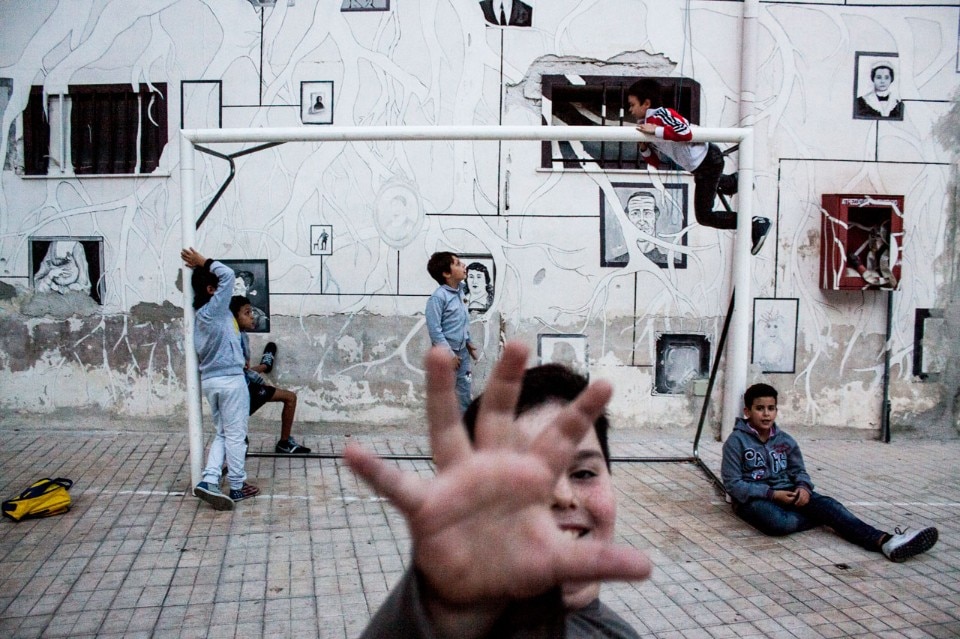
But Orlando’s administration is proposing more than just birthright citizenship. It has a much more radical view of the relation between city and citizenship. The tenet is that people do not decide their place of birth, so everyone must have the right to decide where to live.
In March 2015, the city council approved the endorsement of the Carta di Palermo. Signed by legal experts, intellectuals, representatives of institutions and community organisers, the Carta asks the European Union to promote the abolition of residency permits; it asks the entire world to recognise mobility as a human right.
Since 2013, the mayor of Palermo gave honorary citizenship to over 2,700 foreigners, many of which were children
The proposal to annul the existence of residency permits is not a provocation, but a declaration of intent that requires the undoing of emergency measures that have led to inhuman rules and regulations. The Carta di Palermo reminds us that history is full of “inhuman legalities”, starting with the death penalty. Abolishing the residency permit, whose periodic and discretionary issuance conditions the holder’s survival, is fundamental in order to build a citizenry based on a true sense of belonging. At the same time, the Carta proposes the realisation of entrance channels that would no longer see people arrive crushed and wronged by violence endured at the borders and during the trips managed by criminal organisations.
As is clear when you stroll through the crowded streets of downtown Palermo, hospitality is the best tool to generate security. From Lampedusa to Palermo, tourism is booming. Here, citizens as well as tourists from Paris, Brussels and other places violated by terrorism, feel secure. Opening doors generates security.


